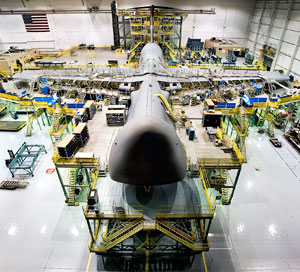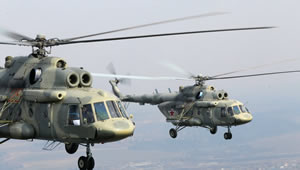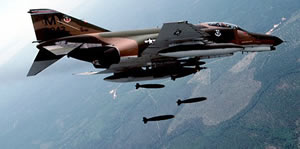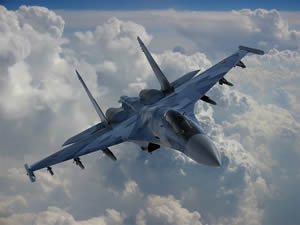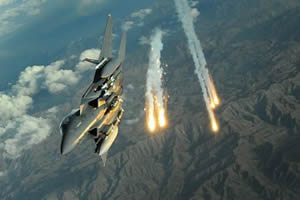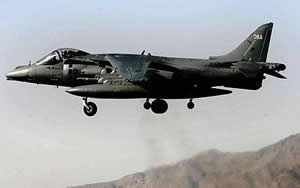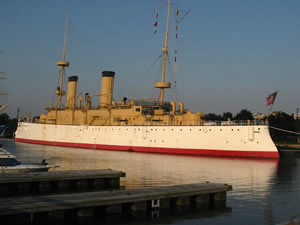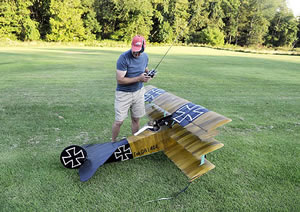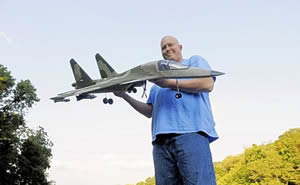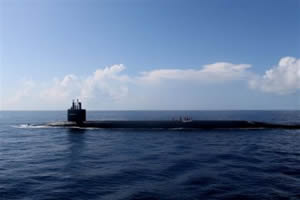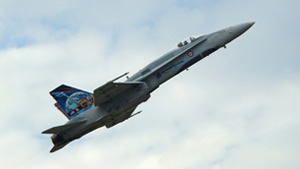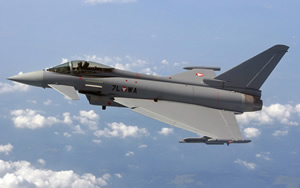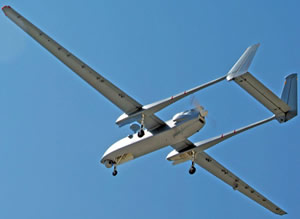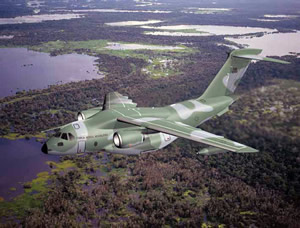-
Posts
6,754 -
Joined
-
Last visited
-
Days Won
38
Content Type
Profiles
Forums
Gallery
Downloads
Store
Everything posted by Erik
-
C-5 Becomes A ‘Superstar’ Lockheed Martin MARIETTA, Ga., September 2nd, 2010 -- Another Lockheed Martin [NYSE: LMT] C-5 is being transformed into the world’s most capable strategic airlifter, the C-5M Super Galaxy. With more than 70 improvements, the Super Galaxy is rapidly becoming the linchpin of success in achieving global reach. The next C-5M Super Galaxy will be delivered on Sept. 30, 2010 and will be stationed at Dover Air Force Base, Del. The C-5M Super Galaxy recently achieved a 96 percent departure reliability rate while delivering critical cargo to troops in Afghanistan and was called upon to carry the 7.5-ton Alpha Magnetic Spectrometer to be launched on the last space shuttle flight next year. Lockheed Martin
-
http://combatace.com/files/file/1549-desert-storm-1991-light-patch/ There's the file you're looking for. I'm not sure what that other link is. Erik
-
There's no specific reason based on your member status. I would need more information to properly address this, the question is too vague. Thank you.
-
Russia to sell Mi-17 helicopters to Argentina RIA Novosti. Alexei Kudenko Russia has signed a "historic" contract on Mi-17 helicopter deliveries to Argentina, a member of a Russian delegation said on Wednesday. "The contract provides for the delivery of two Mi-17 helicopters to the Argentinean Air Force," the official said, adding that the contract was signed on Tuesday evening. The sale is the first time the Argentinean military has bought Russian military hardware, he said. "Until now there has been no military-technical cooperation between Russia and Argentina," he said. Vyacheslav Davidenko, spokesman for Russian state arms exporter Rosoboronexport, confirmed the contract. MOSCOW, September 1 RIA Novosti
-
First Flight for New HELLFIRE II Missile Design Lockheed Martin ORLANDO, Fla: Lockheed Martin's new multi-functional AGM-114R Hellfire II missile scored a direct hit during its first proof-of-principle (POP) flight test recently at Eglin Air Force Base, FL. The Hellfire II design, now entering the qualification phase, features a new multi-purpose warhead that enables a single missile to cover all of the target sets of the current laser-guided Hellfire II variants. The POP 1 flight test featured a lock-on-before-launch engagement of a stationary target board at 3.2 miles (5.1 km). The team used a ground-based laser designator to illuminate the target. The inert missile, which was ground-launched, was equipped with an enhanced telemetry package. In addition to proving out the new components and software, the flight also verified backward compatibility with Hellfire II platforms that cannot provide targeting information to the missile. "The multi-functional Hellfire II missile is one missile for many missions," said Ken Musculus, director of Air-to-Ground Missile systems Programs at Lockheed Martin Missiles and Fire Control. "Its multi-functional warhead enables the AGM-114R to neutralize a broad set of targets previously covered by four different warhead models - everything from armor and air defense systems to patrol boats and enemy combatants in SUVs or caves. Warfighters won't have to decide ahead of time what they might encounter and load the appropriate combination of missiles; with the multi-functional Hellfire II, they can meet many contingencies with a single missile." Prior to the first POP flight test, Lockheed Martin completed a battery of warhead tests, including 10 precursor warhead tests, four main warhead tests and five tests of tandem warheads within the Hellfire guidance section. The next two POP flight tests, scheduled for early next year, will feature live warheads. "This new Hellfire II can be fired from both rotary-wing and unmanned platforms," Musculus said. "A new inertial measurement unit enables properly equipped platforms to launch missiles at targets behind them without first having to turn the aircraft around. Getting the missile on target that much quicker gives the enemy less time to react or escape." Musculus said many of the new improvements are software-driven. "We've replaced a host of circuit boards, transistors and other hardware components with software," he added. "Turning hardware into software contributes to the modular design of the missile and offers an efficient path to future upgrades." With more than 25,000 rounds produced for the U.S. and 14 international customers, Hellfire II has been successfully integrated with attack helicopters in the U.S. and many Allied fleets. It is also capable of surface launch from ground vehicles, tripods and small vessels. More than 10,000 Hellfire missiles have been successfully fired in combat. Lockheed Martin
-
F-4 group holding conference in Panama City DANIEL CARSON / News Herald Writer PANAMA CITY — A national nonprofit group dedicated to preserving the history of the F-4 Phantom fighter jet will hold its annual conference in the Panama City area this year, a group spokesman said Monday. The F-4 Phantom II Society’s “PhanCon” is scheduled for Sept. 20-23, with the group’s members planning to visit Tyndall Air Force Base and Pensacola’s Naval Air Museum as part of the conference. The F-4 group last held its annual meeting in Panama City about five years ago, said James Thompson, the society’s event coordinator. The society chose to return to Panama City because of its proximity to Tyndall and the base’s use of converted QF-4 jets as aerial targets, he said. The 82nd Aerial Target Squadron at Tyndall and Holloman AFB, N.M., operates the Department of Defense's only full-scale aerial target program, maintaining an inventory of 50 modified QF-4 Phantom II aircraft for this purpose. “It’s a sad thing to see, but it’s a good thing for training,” Thompson said. According to Boeing, more than 800 F-4 Phantom II aircraft are still on active duty with the defense forces of eight nations: Egypt, Germany, Greece, Israel, Japan, South Korea, Spain and Turkey. Almost 100 Phantoms have been converted into QF-4 drones and missile targets that still serve the U.S. Navy and Air Force. Thompson, who served as an F-4 maintainer for almost 15 years, said the F-4 society includes former pilots, maintenance personnel and members with a general appreciation of the fighter jet and its place in military history. “It’s a pretty prestigious fighter of all of the fighters built,” Thompson said of the F-4, which first took to the air in 1958. He said previous PhanCon conventions have taken place at Holloman and Davis-Monthan AFB, Ariz., also known as “The Boneyard.” The society tries to hold its conferences near Air Force bases where the F-4 is still utilized for training purposes. “We’re running out of places to go,” Thompson said. Convention-goers will visit Tyndall’s 82nd Aerial Target Squadron on Sept. 20, with society members also planning to see the base’s F-22 squadron. Thompson said he expects between 75 and 80 people to attend the conference, including 10 international members based in Switzerland, England, Germany and Belgium. The group’s U.S. membership is spread throughout the country, he added. Retired Brig. Gen. Dan Cherry, author of “My Enemy, My Friend,” will be the guest speaker for this year’s conference. The Walton Sun
-
Iceland set to embrace war-game fliers Gudmundur Petursson worked for years as a contractor for the US military at Keflavik airbase on the Reykjanes peninsula, south-west Iceland. Now, he is waiting for a green light from the Icelandic government to start building a 15,000 sq metre hangar for a fleet of Russian-made fighter jets. Mr Petursson, chief executive of FM Service, an Icelandic facility management company, is a cheerleader for plans by a private military training company to base up to 33 Sukhoi “flanker” jets at Keflavik for use by air forces worldwide as mock enemy in aerial war games. “Most people around here are very positive about it because it will bring a lot of jobs and keep technological expertise here,” he said. Iceland’s readiness to embrace ECA Program, the company involved in the plan, highlights its need for jobs and investment after a banking crisis shattered the country’s economy in 2008. The Keflavik area was struggling before the crisis after the departure of the US air force in 2006 pushed up unemployment. The base closure ended 60 years of US presence at Keflavik and left Iceland, which has no armed forces of its own, without any permanent military protection. Critics have portrayed ECA Program as a mysterious “private army” seeking to fill Iceland’s security vacuum. But Melville ten Cate, the company’s Dutch co-founder, insists that there is nothing sinister about his plan to buy €1.2bn ($1.5bn, £983m) of warplanes from Belarus and bring them to Iceland. The aircraft will not be equipped to carry ammunition, allowing them to be licensed as commercial aircraft, and no military exercises will take place in Icelandic airspace, he says. “We couldn’t take out a pigeon unless it flew into the engine.” ECA had previously targeted Goose Bay airbase in Canada as a potential home but turned to Iceland when negotiations with Canadian authorities broke down. Detailed talks have been under way for more than a year over the lease of space at Keflavik and much of the certification needed to import the jets and associated ground equipment has been secured. Support for the project is far from universal within the Icelandic government but officials say ECA is close to winning conditional approval. A few similar companies, such as Airborne Tactical Advantage Company of the US and Top Aces of Canada, offer a similar service using older Israeli, French and US jets. But, if all goes to plan, ECA’s will become by far the biggest and newest fleet of its kind. The aircraft are to be backed up by ground equipment, including radar and communications jamming technology and simulated surface-to-air missile systems, to create realistic training conditions. Several defence industry officials contacted by the Financial Times are deeply sceptical of ECA’s business plan, given the cost of buying and maintaining fighter aircraft. Mr ten Cate insists he can pull it off. He says most air forces use their aircraft to mimic the enemy – a waste of resources, he argues, that risks creating a false sense of security. “With the cost per hour of flying fighter jets, you cannot afford to have guys boring holes in the sky not learning anything. Training should involve flying against different aircraft to your own, behaving like your enemy.” SU-27s are an important part of Russian and Chinese air power but Mr ten Cate insists that ECA is not aiming to imitate either. “Russian fighter jets have been sold around the world so they are widely used,” he says. “We’re a generic enemy.” A recruitment drive is under way for up to 45 qualified fighter pilots, as well as maintenance technicians. An advertisement was placed in an aviation trade publication last month offering pilots a salary of €160,000 a year – more than all but the most senior commercial airline pilots. Source: The Financial Times Limited 2010
-
Ex-USSR awash in radioactive ‘dirty bomb’ substances Defence Talk — By Agence France-Presse on August 30, 2010 Moscow: It has been of one of Europe's worst nightmares: traffickers obtaining highly-radioactive materials on the loose in the former Soviet Union with the help of corrupt officials and passing them on to rogue groups looking to make a dirty bomb. The seizure this month of two kilograms of uranium in Moldova, an impoverished ex-Soviet nation bordering the EU member Romania, is a stark reminder of just how available and poorly guarded nuclear materials can be, analysts said. Moldovan police said this week they had seized a container with 1.8 kilogrammes of highly-radioactive Uranium-238 and arrested a group of suspected traffickers who had sought to sell it for nine million euros (11 million dollars). The United States has said it provided technical assistance to Moldova in the case, which the US State Department described as a "serious smuggling attempt". "Hundreds of thousands of tonnes of uranium lie in storage at industrial sites, one can take bagfuls of them," independent Russian military expert Pavel Felgenhauer told AFP. "There are people who try to sell them at a high price and most often they fall into the hands of security services," he said. The SBU security service in Ukraine, site of the 1986 Chernobyl nuclear disaster, have recently reported three cases of seizing radioactive materials. Nine people were arrested in March as they tried to sell 2.5 kilograms of uranium 235 and 238 and strontium in the eastern Donetsk and Lugansk regions, their radioactivity levels 100 times higher than acceptable norms. A container "with radioactive materials" was seized in December 2009 in the western region of Lviv, while in April that year, three Ukrainians were arrested in the nearby Ternopil region with four kilograms of plutonium which could be used to make a dirty bomb. The plutonium container's radiation levels were 250 times higher than the norm, officials said. In 2006, a suspected Russian trafficker was busted in Georgia as he attempted to sell "100 grams of 90-percent-enriched uranium" to a Georgian policeman who passed himself off as a member of a radical Islamic group. The case drew concern from the International Atomic Energy Agency. "The entire territory of the former Soviet Union is awash in radioactive material which was used in Soviet times for some 30 various ministries and services, in medicine or agriculture," independent Russian military expert Alexander Golts said. "Most often those materials are enriched to just three to five percent, which cannot be used to make nuclear weapons," he said. However the radioactive matter still presents a danger because potential traffickers while searching for clients may keep it in close proximity to people, for example in garages and unwitting passers-by can find themselves within 100 meters of the storage area, Golts said. As for highly-enriched substances, "they are under a very different level of protection," he said. The uranium intercepted in Moldova, Golts said, "could be used to make a dirty bomb that could cause contamination and panic." Levels of radiation emanating from the uranium were 60 times higher than is safe for humans, authorities said. Officials said Thursday talks were underway to send the uranium to Germany to pinpoint its origin and degree of enrichment because Moldova does not have laboratories to do the required analysis itself. But some experts are not convinced that the poorly guarded nuclear materials are dangerous, even if they end up in the wrong hands. "There is no real black market for nuclear materials, there is trafficking in radioactive substances," said Bruno Tertrais, expert at the Paris-based Foundation for Strategic Research (FRS). "In most cases of sales -- or attempted sales -- of nuclear substances, there are only a few grams being sold, too little by far to make a bomb," Tertrais said. A Vienna-based Western expert, speaking to AFP on condition of anonymity, said: "If the material is as reported, then there is no immediate danger from the material itself." "Of greater concern is whether this represents a larger smuggling effort and where the material came from." Defence Talk
-
F-15 Eagles soar for last time at Hickam Defence Professionals -- 30 August 2010 Tech Sgt. Cohen A. Young Defense Media Activity-Hawaii / AFNS JOINT BASE PEARL HARBOR - HICKAM, Hawaii | Pilots from the 199th Fighter Squadron, Hawaii Air National Guard, completed their last training mission with the F-15 Eagle from Joint Base Pearl Harbor-Hickam, Hawaii Aug 25. The HIANG is upgrading to the F-22 Raptor, a fifth generation fighter, and received their first two Raptors in July. The ANG is the lead in a total force concept that already exists at JB Hickam with the C-17 Globemaster III. The 199th FS will fly and help maintain the 20 F-22 Raptors that bring another capability to the HIANG. Many of the current F-15 pilots of the HIANG are eager to start training and flying the Raptor, but will still sorely miss the Eagle aircraft, which the unit has flown since 1987, said Lt. Col. James Sage, a pilot with the 199th FS. "It's like saying goodbye to a good friend," said Colonel Sage said. "It was exciting flying it for the last time, and especially against a F-22, but at the same time the F-15 has always brought me home safely and been an outstanding aircraft." The three remaining F-15s will depart JB Hickam Sept. 1, and with that, two of the fighters will move onto the 56th Aggressors Squadron at Nellis AFB, Nev., while the other will move onto the 120th Fighter Wing of the Montana Air National Guard. The Montana unit has assumed the HIANG's air-defense mission for the next year as the HIANG transitions to the F-22 said 199th pilot Lt. Col. Mark Ladtkow. "It's somewhat a bittersweet feeling flying the last training mission of the F-15 with our unit," Colonel Ladtkow said. "I'm blessed to have the upcoming opportunity to fly the F-22, but the F-15, which I've flown for 17 years, is a friend of mine and will be missed." Colonel Ladtkow is a 20-year veteran of the military, with the last six being part of the ANG. He is slated to deliver his jet to the Montana ANG in September. "The 199th (FS) proves that National Guard forces are capable of maintaining a strategic presence with its active-duty association and providing a great value to our nation and the state of Hawaii," said Gen. Craig R. McKinley the chief of the National Guard Bureau. The F-22, a single-seat, twin-engine aircraft, which utilizes stealth technology, was originally designed as an air-superiority fighter. "These F-22 Raptors are the state-of-the-art, air-superiority fighters, and couldn't be located at a better place," said General McKinley. Defence Professionals
-
Jump jets to fall victim to spending cuts Telegraph -- By James Kirkup, Political Correspondent -- 30 August 2010 In a move that could put hundreds of British manufacturing jobs at risk, defence chiefs are ready to abandon plans to buy a vertical-landing fighter jet for the Royal Navy. Instead, a cheaper conventional-landing warplane will replace the Navy’s Harriers when they retire. The decision is the first to emerge from the Strategic Defence Review to have direct consequences for British industry. Rolls Royce will be hard hit by the move, which could also strain British relations with the US. The Navy is buying two new aircraft carriers at a cost of more than £5 billion. Army and RAF chiefs have questioned that plan and suggested that one carrier should be scrapped or shared with the French navy. Attempting to defend the carriers, Royal Navy chiefs are seeking cuts elsewhere in their planned spending. Aircraft carriers now in service carry Harrier jets, which are can take off from a short runway and land vertically by directing the blast of their engines downwards. The next generation of carriers are expected to carry US-made Joint Strike Fighters. Originally, the Navy was planning to buy a specially-adapted short take-off vertical-landing (STOVL) variant of the JSF, which would take off and land on the carriers much as Harriers do now. However, developing and building the special STOVL version of the JSF would cost more than buying the conventional version, and insiders say that cost cannot be justified. The military value of vertical landing has also been questioned by senior officers, who say conventional fighters are more useful because they can fly further and faster and carry more weapons. Using conventional jets would also make it easier to conduct joint operations with allies including the US and France, whose carriers As a result of those calculations, the STOVL aircraft is set to be scrapped in favour of the cheaper conventional JSF, which would be launched from the new carriers using catapults. In recent weeks, the MoD has quietly commissioned design work on catapults to launch jets from the new carriers, due to enter service in 2014 and 2016. Because construction work on the ships is still at an early stage, adapting their designs to accommodate conventional aircraft is said to be relatively easy. In addition, a team of 12 Royal Navy pilots has been sent to the US to train with conventional take-off aircraft on carriers. Much of the specialised engine system for the STOVL jet is being made by Rolls Royce in Bristol, and the switch would jeopardise hundreds of jobs there. The decision to abandon the STOVL jet could be rubber-stamped at a meeting of the National Security Council next week, although ministers are aware that the move could be controversial. Giving up on the STOVL aircraft could lead to accusations of waste, since the Ministry of Defence has already spent more than £500 million on the programme. But insiders say the overall saving of buying standard fighters instead will more than justify writing off that spending. Pulling out of the STOVL project could also strain British relations with the US. The STOVL jet is being jointly developed with the US Marine Corps, and without British involvement, US costs are likely to increase. Government sources said ministers will blame the previous administration for the need to change plans on the carriers and their aircraft. A source said: “Labour chose the wrong type of aircraft and the wrong configuration of carrier, and they wasted a lot of money doing it. What’s going on now is about trying to fix that mess.” An MoD spokesman said: “The Defence Secretary has made clear that tough decisions will need to be made but the complex process of a Strategic Defence and Security Review will be concluded in the Autumn and speculation at this stage about its outcome is entirely unfounded.” Telegraph
-
The Olympia may be headed to a watery grave John F. Lehman Former Secretary of the Navy A few months ago, one of our nation's most famous landmarks was deteriorating badly. Independence Hall had a roof leak and needed numerous expensive repairs. The city's historical commission met in April with the National Park Service to determine a course of action and on June 9, the park service announced that $4.4 million would be provided for a restoration of Independence Hall. The funding came from the stimulus bill. A few short blocks from Independence Hall there is another icon of American history in desperate need of restoration. The USS Olympia is moored at Penn's Landing on the Delaware River and is one of several historic vessels at the Independence Seaport Museum. The ship gained its place in history serving as Commodore George Dewey's flagship in the Battle of Manila Bay in the opening days of the Spanish-American War. It was from the deck of the Olympia that Dewey uttered those famous words "You may fire when you are ready, Gridley." With these words, the attack on the Spanish fleet was launched and, within six hours, Dewey's Asiatic Squadron had sunk or captured the entire Spanish Pacific fleet and silenced the guns on shore in Manila. America's victory in the Spanish-American War was an important event in U.S. history, marking the beginning of the nation's emergence as a world power. The Olympia saw additional service in the years after the Spanish-American War and had the honor of bringing home the remains of the "Unknown Soldier" from World War I in 1921. It was decommissioned Dec. 9, 1922, and was preserved by the Navy until 1957, when the ship was released to the Cruiser Olympia Association and became a museum open to the public in Philadelphia. In the years since, the city and private organizations have funded the Olympia's maintenance and its operation as a museum, but now the ship is in need of substantial restoration. The Olympia has been in the water continuously since 1945, and the hull has rusted to the point where the ship is in danger of sinking. The current owner, the Independence Seaport Museum, can no longer afford the upkeep on the ship, and it is scheduled to close in a few months. The plan now being discussed with the Navy is to close the ship Nov. 22 and remove it, towing the vessel either to a scrap yard or out into the Atlantic Ocean to be sunk as part of a barrier reef off the coast of Cape May. Yes, incredible as it may seem, that is the fate being contemplated for the Olympia, the oldest steel-hulled warship afloat and the only naval vessel from the Spanish-American War still in existence. Why is the Olympia worth investing $20 million to $30 million in private or taxpayer funds? Because preserving this nation's history is important to future generations. The Olympia is not just a historic warship. It was an engineering marvel for its time. It was one of the first naval combatants to have electricity and a powered-steering gear. The cruiser was part of a program of ships for the "New Navy" of the 1880s and 1890s, designed to correct the deficiencies of a weakened and neglected naval force. Its innovative design included high-speed engines (Olympia was said to be the second-fastest ship in the world at 22 knots), modern armament, and armor shielding that protected the engines and the magazines. When the Olympia was in danger of heading to the scrap heap in 1996, the Independence Seaport Museum stepped up and accepted responsibility for the ship. However, the museum can no longer maintain it. Now, the U.S. public needs to stand up, the same way it stood up for Independence Hall. For the last six months, former U.S. Rep. Curt Weldon and others have been putting together a plan to secure funding for a restoration of the Olympia and its possible relocation. The Independence Seaport Museum has had the ship's hull surveyed and repair plans have been drawn. The dredging necessary to remove this delicate structure from Penn's Landing could start soon after the funding is identified. I believe the Obama administration should dedicate stimulus funding for the Olympia's restoration. This is the kind of "shovel ready" project that could be launched in a matter of weeks. Funding this project would not only preserve a National Historic Landmark but would also create much-needed employment in the region. Like Independence Hall, the USS Olympia deserves to be restored and maintained, and this is certainly a legitimate role for the federal government. Philadelphia Inquirer
-
Remote-controlled model airplanes roll in for annual event Sunday, August 29, 2010 By Shannon M. Nass, Special to the Post-Gazette Nestled among the woods of South Park is a quiet stretch of land known as Jack Coates Memorial Field. Unlike other grassy patches in the park, this one has a landing strip down the center. Most days the gates leading up to it are locked with access limited to day hikers and mountain bikers who traverse the trails that cross and surround it. However, on clear evenings the skies above thunder and the field is transformed into a museum display as models and renditions of war birds, jets and helicopters are scattered about awaiting their turn for glory in the sky. The pilots of these planes are members of SPARKS (South Park Radio Kontrol Society), one of 131 Pennsylvania clubs chartered by the Academy of Model Aeronautics. The club boasts 50 members and is one of five located in the Pittsburgh metro area. SPARKS members are currently practicing their takeoffs, landings, loops and rolls in anticipation of the 5th annual Big Sky Fly-In to be held Sept. 11-12 at 268 Sky Kings R/C Field in Kittanning. Flying begins at 10 a.m. each day and continues until after dark. This family-friendly event draws hundreds of pilots and spectators from all over Western Pennsylvania and is open to AMA members and guests. Ed Andrews of Brookline with a plane he built from scratch. Ed's plane is also featured at the top. "It's like a miniature air show," said SPARKS vice president Ed Andrews of Brookline. "Fly whatever you bring and show it off to the best of your ability. If you just fly it around in circles, that's good enough." Andrews started flying model airplanes at the age of 6 and has been interested in aircraft ever since. He holds a pilot's license, but surprisingly prefers to fly model planes. "I actually prefer the radio-controlled planes because of the camaraderie that you have here," he said. "With a big plane, you're by yourself and you're talking on the radio until you get to your destination. But here you're always around others." Unlike other remote-control sports that draw fierce competition, one of the main attractions to model aircraft piloting is camaraderie. Most SPARKS members share an interest in aviation in general and fly their planes for the sheer fun of it, said Andrews. The wide variety of aircraft available to be piloted offers continuous challenges, making it nearly impossible to ever truly master the sport. "It's so diverse and that's what draws me to it. As soon as I get pretty good at one particular facet of it, I can move on to the next phase and it's like starting over again," said Andrews. This diversity carries over into the mixture of people attracted to the sport. While it is male dominated, women and children maintain a presence at the fields and are always welcomed and encouraged to participate. Chris Stefano of Mt. Lebanon, with his electric motor plane, as part of SPARKS, or the South Park Radio Controlled Society. The youngest member of SPARKS is 15-year-old Michael Camella of Baldwin, who began flying planes three years ago after attending an air show that was sponsored by the club. An airplane and military enthusiast, model airplane piloting appeals to Michael on many levels. "I've been fascinated by flight since I was little, and it's amazing to think that man can fly. It's amazing what these things can do and I'm impressed by ... stories of pilots in war time. It's just incredible," Michael said. Although relatively new to the sport, Camella is already proficient at piloting and has begun to delve into aerobatic maneuvers with his plane. This has sparked some interest in competitions, but for the most part, Camella says he flies simply because "it's a blast." As college looms ahead, said he's Camella considering expanding his interest in aviation into a career by either joining the military or pursing an education in robotics. No matter where the sport leads him, adventure, challenges and a lifetime of learning are guaranteed as he continues to explore the many aspects of piloting. Like most model airplane enthusiasts, Camella started young and does not see his hobby as a passing phase. He echoes the sentiments of model airplane pilots everywhere when he says, "I'll be doing this for my entire life and it will last." Images: Bill Wade/Post-Gazette Post Gazette
-
You have to love Internet Explorer and it's error messages. You'd almost think the "server" was having problems based on that message, would you? The server is fine. Our logs indicate you are running Internet Explorer 8 and I also see you have the download manager for IE8 installed and running. Here's what I would advise. -- To test this before you get into a bunch of trouble shooting download and install a new browser specifically I'd recommend FireFox. Then try downloading your file. If the test works for you and you want to diagnose and continue to use IE then you'll need to fix these issues. A) Remove or disable the download manager for IE8 (usually in add-ons) B) Resolve the TTL restriction on your machine. This can be in a browser setting or in a setting of a Internet Suite or Firewall like McAfee or Norton. A browser connection to a website normally only lasts in short bursts as you request and receive information. During a download the receive part (especially for larger files) takes longer. Either your browser or your Internet Suite can consider this a security risk and close those connections that WAIT over a specific time. I suspect this is what is happening. You request a file >> We receive the request and open a download window for transfer (your browser goes into WAIT) >> You start receiving the file and your TTL expires which closes the connection. Now that I detail this I'd look at your security software first or firewall. That's all I can come up with based on what you've shared. Be sure to let me know your fix.
-
ThirdWire Sneek Peek of Upcoming Release 28 August 2010 -- DanW In a surprise announcement today Dan from ThirdWire shares with the community some images and news of their upcoming release. In no great detail and without any release dates the news of the release has so far been positively received by the ThirdWire Community. From the looks of the expected release a mission editor and other terrific enhancements are on the horizon for the Strike Fighters 2 series. The original thread in the SF Forums: CLICK HERE ThirdWire
-
Unmanned Helicopter Being Developed For U.S. Military Red Orbit: Friday, 27 August 2010 Lockheed Martin is developing an unmanned helicopter for the U.S. military designed to lift supplies and equipment to troops in Afghanistan. The Kaman K-MAX helicopter can fly without a pilot and carry up to 6,000 pounds of cargo, which is more than the aircraft's empty weight. The helicopter's primary use would be to transport equipment to troops at forward operating bases on the frontline. K-MAX will help reduce the need for large vehicle convoys lowering the risk of soldiers being ambushed or injured by IEDs (improvised explosive devices). The aircraft can be flown into under-fire areas without risking an aircrew. A ground-based operator controls the aircraft by using a laptop. The operator can input a flight plan detailing the destination and route. K-MAX can also be flown hands-on from the cockpit if necessary and uses counter-rotating intermeshing rotor blades to generate its lifting power. The helicopter reaches a maximum airspeed of 92 mph and can be programmed to release at different times. It also flies in weather conditions that normally ground other helicopters. K-MAX is being developed for the U.S. Army's "Autonomous Technologies for Unmanned Air Systems" (ATUAS) program. However, U.S. Marine Corps may also end up using the aircraft. If testing goes as planned, then the helicopter could be sent to Afghanistan for assessment sometime towards the end of 2011. Image: The Unmanned K-MAX launches from the pad with a 1500 lb sling load during contractor flight tests at Yuma Proving Ground, AZ, January 2010. Red Orbit
-
Replacement of Swiss Fighter Jets Postponed Defence Talk — By SwissInfo on August 27, 2010 The Swiss government has delayed the partial replacement of the army’s Tiger fighter jets for financial reasons, the Federal Chancellery announced on Wednesday. The government confirmed it planned to replace 54 “obsolete” planes but has postponed the purchase until 2015 at the latest, on the recommendation of Defence Minister Ueli Maurer. Some jets in the Tiger fleet are over 30 years old. Buying 22 new planes would have cost up to SFr4.8 billion ($4.6 billion). In a statement, the government said it could not use supplementary credits under the current budget constraints to buy the replacements, and existing resources had to be used to cover other army costs. The defence and finance ministries will decide by the end of 2011 how much can be spent on replacements and when. The decision stirred up various reactions. The Swiss People’s Party said it was regrettable but understandable. The Social Democrats were pleased, saying it would have been wrong to spend the money when other budget cuts were being made elsewhere. The Group for Switzerland without an Army commented that the outcome showed the planes were not urgently needed. Defence Talk
-

Can't upload new "OFF Pilots Map" Jpeg
Erik replied to Olham's topic in Site Support / Bug Reports / Suggestions
I don't see any reason then why you can't do what you've been doing all along. Can you PM me the images so I can see if there's something wrong with them that the software doesn't like? -

Can't upload new "OFF Pilots Map" Jpeg
Erik replied to Olham's topic in Site Support / Bug Reports / Suggestions
You may have hit a maximum size of images per thread or thread size. I'm suspecting image size limit was hit. Can you check this again? Thanks. -

Can't upload new "OFF Pilots Map" Jpeg
Erik replied to Olham's topic in Site Support / Bug Reports / Suggestions
What does the error message say? -
Submariners Give Rare Glimpse Into ‘Silent Service’ Defence Talk — By US Navy on August 25, 2010 ABOARD THE USS RHODE ISLAND: On a recent sun-soaked morning hundreds of miles off Florida’s Atlantic coast, this Trident ballistic missile submarine surfaced for an unusual operation. About a dozen journalists, many representing the military, watched from a contracted 250-foot support vessel as the sleek, black back of the submarine ascended above gentle waters in the open ocean and maneuvered alongside the boat. With just a few feet separating the two vessels and a Coast Guard cutter on watch, the support boat’s crew extended a catwalk bridge from its deck over to the Rhode Island. A pod of dolphins played in the wake below as the journalists hobbled quickly over to the submarine. “Keep moving! Keep moving!” a submariner shouted, as a slowdown easily could lead to a foot or leg getting caught and injured, or causing a “man overboard” situation. After exchanging quick greetings with the attending crew, the journalists climbed in turn through the hatch and down the steep, narrow ladder into the belly of the sub. The Aug. 16 media visit offered a rare glimpse into what is known as “the silent service,” the community of Navy submariners who man and control the vessels that carry weapons under the sea. Journalists were invited to embed on the Trident after a military-commissioned survey showed that Americans know less about the Navy than the other services, and even less about submarines and those who serve on them, Lt. Rebecca Rebarich, public affairs officer for Submarine Group 10 at King’s Bay Naval Base, Ga., said. The visit also coincided with increasing media attention on the submarine community following two major changes in Navy policy earlier this year: lifting the ban on women serving on submarines, and ending smoking on subs. The Navy chose 21 women early this summer to begin the 15-month training to serve on subs beginning in the fall of 2011. The smoking ban takes effect Jan. 1. The Nuclear Triad The Rhode Island is an Ohio-class submarine, the largest model in the U.S. fleet. At about 560 feet long and 42 feet in diameter, Ohio-class submarines hold 24 Trident ballistic missile tubes and four torpedo tubes. The Navy’s fleet of 14 SSBNs is based at King’s Bay and at Bangor, Wash. The Trident subs, known as “boomers,” are powered by a single-shaft nuclear reactor. They can carry more than 16 tons, travel more than 20 knots -- more than 23 miles per hour -- and submerge more than 800 feet, according to Navy officials who keep their exact capabilities secret. Part of the nuclear deterrent triad along with land-based intercontinental ballistic missiles and Air Force bombers, the Tridents’ sole mission is to deter a nuclear attack through its ultimate strike capabilities. A command from the President, passed through U.S. Strategic Command and ultimately to the ship’s captain, allows the crew to fire a long-range ballistic missile in a matter of minutes. The Trident is a three-stage missile powered by solid rocket motors. It’s about 44 feet long and 7 feet in diameter, and weighs about 120,000 pounds, according to information provided by public affairs officials. Each has a range of more than 4,000 miles. Touring the Boomer The boomer’s design of massive missile tubes occupying the bulk of the midsection and extending vertically through four levels is the focal point of the vessel and a reminder of the singular mission of deterrence. The space between the tanks makes up the hallways. Small rooms, such as the nine-person enlisted berthing cabins -- three sets of bunks with three beds each -- and a couple of bathrooms, known as “heads,” are tucked in between. The galley and crew’s mess are nearby on the same level and they present a nearly constant hub of activity. The Navy is known for providing good meals, and if the Rhode Island is an indication, submarines are among the best. The boat’s head chef, Petty Officer 1st Class Daniell Pinero, a former chef for the secretary of defense, and his crew provide three hot meals each day as well as late-evening snacks. Stocking the galley for a three-month tour is no small undertaking. A lengthy shopping list includes, for example, 530 pounds of coffee, 22,140 eggs, 800 pounds of butter, 504 bags of microwave popcorn and 21,000 biodegradable weights to sink trash in the ocean. Because all food must be purchased and stored before the start of the tours, fresh produce is a scarce commodity enjoyed in the early days of each patrol. Still, there are few complaints. Pizza, spaghetti, turkey and dressing, ham and sweet potatoes, rolls, cakes and pies -– all homemade -– were provided during the media visit. “I gain 10 pounds every time we go out,” Cmdr. Robert J. Clark, commanding officer and captain for one of the Rhode Island’s two rotating crews, said. Exercise equipment is placed sporadically around the ship – cardio machines and free weights – wherever there is a little spare room. But as Clark and others noted, any weight gained on board is lost during shore duty. A Tight-knit Community Clark is the commanding officer and captain of the Rhode Island’s blue crew, which carried the media representatives during their visit. His executive officer, or second in command, is Lt. Cmdr. Paul Pampuro. Each Trident sub includes two crews of 15 officers and about 140 enlisted men, known as the blue and gold crews, each with its own commanding officer. Each crew rotates onto submarine duty about every 112 days, while the other crew stays at base for training and preparation for the next time at sea. A snapshot of the crew is one that is young, smart, and committed to the mission and fellow crewmembers. The average age is 23, and many have engineering, math or science degrees. Ask submariners what they enjoy most about their work and the answer usually is the camaraderie of a tight-knit community, the highly specialized work, and the importance of the mission. Lt. Colin Myers is a Naval Academy graduate who serves as the sub’s main propulsion assistant, assistant security manager, intelligence officer and ship self-assessment coordinator. He said he enjoys the Rhode Island because of the quality of the crew. “These are a lot of really smart guys,” Myers said. “Some are double majors. It’s a volunteer force, so they really want to be here.” He added that because the submarine force is small, there are many opportunities and officers advance quickly; some obtain command by their mid-30s. Serving on a submarine -– mostly submerged for three months with only periscopes to see out -- also can be stressful, tedious and boring, submariners say. The days are long, sleep is minimal, and submariners are surprisingly disconnected. E-mail is sporadic, only coming through every couple of days when an antenna is connected to the sail -- a submarine’s exterior tower-like structure -- and attachments are not allowed. There are no phone calls; no text messages. Still, some say they don’t mind being disconnected. “You either love it or hate it,” said Petty Officer 2nd Class Calvin Hurt, the torpedo room supervisor. Reality in Mission Control Around 9 p.m., some off-duty crew members gather in the mess to wind down with a movie. The chef has made pizza and buffalo wings, and someone pops in the 1995 submarine movie, “Crimson Tide.” “This is a comedy!” a long-time submariner proclaimed as the crew laughed at the creative license Hollywood took in producing the action-packed drama of a Trident submarine executive officer, played by Denzel Washington, who leads a mutiny after the captain, played by Gene Hackman, decides to launch a ballistic missile at a perceived Soviet threat. In the real world of Trident subs, protocol and procedures rule. In the control room, the sub’s nerve center, each area is manned in six-hour shifts with full attention on the equipment. The mission is to keep the boomer undetected, while detecting everything else around it. In the front of the room, three enlisted men watch location and conditions on monitors while two of them do their part to “drive” the sub with long-handled steering wheels. Behind them, two others man multiple screens that track sonar and acoustics, analyzing sounds from as far away as 75,000 yards. Behind them, an officer always is watching through the periscope, and those images are provided on computer screens. Coordinates are constantly being called out above the sound of the equipment, and the standard response “very well” acknowledges receipt of the information. Many of the screens are marked “Secret,” and all of the crew has security clearances. While each has his own job specialty, all are cross-trained and expected to be able to do multiple jobs, Rolinger said. “Everyone is an expert at damage control,” he said, noting the crew practices multiple drills -– from firing torpedoes to putting out fires –- several times per week. During a missile release test, Clark stands in the center of the control room receiving information from every possible data point, some relayed repeatedly to ensure conditions have not changed. “All missiles will be released,” he announces along with the exact time so all clocks are synchronized to the exact second. “This is the captain. This is an exercise,” Clark says over the sub’s speaker system. Down the hall, two crew members man the missile control center, divided between “launcher” and “fire” controls. The U.S. ballistic missile fleet fires four test missiles each year, and has had 134 consecutive successful tests in 20 years, Cmdr. Michael Sowa, deputy chief of staff of strategic weapons for Submarine Group 10, said. The tests also serve as a deterrent, and foreign countries are notified before testing begins, he added. “The system works well, even better than it was designed to work,” Sowa said. The British, French, and Russians also test ballistic missiles, and the Chinese are developing the capabilities, he said. “The SSBN mission is to deter,” Sowa added. “So, if we must launch, we’ve failed our mission.” Earning Their Dolphins A more likely scenario than the release of a Trident missile is the release of a torpedo. Back toward the front end of the sub and down the stairs next to the smoking room, two crew members man the torpedo controls, watching red and green lights for the status of torpedoes that lie horizontally on hydraulic lifts. They hold several exercises each week to practice firing torpedoes, and avoiding torpedoes from an enemy. “Everything we do down here, we get one minute to do it in,” Hurt said. A submariner for four years, he said he now loves the job that is very trying for the first two years. Three sailors earned the title of submariner here on Aug. 16 when they were presented the coveted Dolphin pins, which come only after a new crew member proves within 10 months that he has a basic understanding of everything on the boat. Clark presented the pins during a ceremony in the crew’s mess. “The whole thing is a little overwhelming,” Petty Officer 3rd Class Patrick Iverson, 20, of Freeport, Ill., said after receiving his pin. “With this, you know you’ve earned the respect of your fellow shipmates.” Petty Officer 1st Class Herwin Marcia, who has served on submarines for 13 years, still remembers the stress of being new on a submarine. “It’s a big culture shock,” he said. “You have to catch up to where you can support everyone else. You have to be ready when called on. We don’t have time to wait.” Defence Talk
-
NORAD downplays Russian bomber interception CBC News -- Wednesday, August 25, 2010 | 8:23 PM ET NORAD is downplaying an incident on Tuesday that saw two CF-18s shadow a pair of Russian military aircraft as they flew within 56 kilometres of Canadian soil. In a statement Wednesday, NORAD, the North American Aerospace Defence Command, said the CF-18s "intercepted and visually identified" two TU-95 Bear bombers that entered the Canadian Air Defence Identification Zone. "At no time did the Russian military aircraft enter Canadian or United States sovereign airspace," said NORAD spokesman Lt. Desmond James, a Canadian naval officer. "Both Russia and NORAD routinely exercise their capability to operate in the North. These exercises are important to both NORAD and Russia and are not cause for alarm." In a "readout" email to media early Wednesday, PMO communications director Dimitri Soudas said the aircraft were spotted approximately 220 kilometres north of Inuvik, N.W.T. The CF-18 jets from 4 Wing Cold Lake in Alberta shadowed the Russians until both aircraft turned around, Soudas said. "Thanks to the rapid response of the Canadian Forces, at no time did the Russian aircraft enter sovereign Canadian airspace," he said. The Canadian aircraft returned to base without incident. NORAD said its aircraft have intercepted four Russian bombers so far this year and 16 times in 2009. James said NORAD recognizes that all countries have the right to operate in international airspace, but may conduct identification missions should aircraft approach the North American Air Defence Identification Zone. Soudas said Prime Minister Stephen Harper, who is in the Canadian North for his annual Arctic tour, was briefed during and at the end of the mission. A spokesman for the Russian Embassy in Ottawa noted that Canadian authorities repeatedly confirmed the Russian bombers never entered Canadian airspace. Spokesman Sergey Khudyakov said Russia respects Canada's "territorial integrity, including the vast Arctic territories under the Canadian sovereignty." "All flights are being conducted within the international airspace with solely training purposes," Khudyakov wrote in an email to CBC News on Wednesday. Defence committee to probe F-35 purchase News of the encounter comes ahead of the House of Commons defence committee's meetings on Wednesday to examine the government's single-bid purchase of the new generation of F-35 Joint Strike Fighters. Soudas's email touted the "new, highly capable and technologically advanced" F-35s, which are slated to replace Canada's CF-18s sometime in the next decade. "It is the best plane our government could provide our Forces, and when you are a pilot staring down Russian long-range bombers, that's an important fact to remember," Soudas said. The contract, one of the biggest military equipment purchases in Canadian history, is worth $9 billion, but the full cost could rise to as much $18 billion once the government signs a maintenance contract. The Liberals want the committee to question other potential bidders and procurement experts to determine whether a sole-sourced contract gives maximum value to the government and taxpayers. Last week, the prime minister declared the protection and promotion of Canada's sovereignty in the Arctic a "non-negotiable priority." 'Diversion' from criticism Liberal MP Larry Bagnell said he did not know the full details surrounding the latest incident, but suggested the Conservatives had used a previous CF-18 encounter with Russian planes in July as a "diversion" from criticism of the F-35 purchase. Bagnell told reporters in Ottawa on Wednesday that the government was "needlessly" creating a foreign relations issue with Russia just days after saying that working with other countries to resolve Arctic border disputes was Canada's top foreign affairs priority. "How are we going to work with a country we've just chastised for not even coming into our airspace?" Bagnell said. NDP defence critic Jack Harris dismissed the government's interpretation of the encounter, saying there's not been any incursion into Canadian airspace in decades. Russia, Harris said, resumed these flights a couple of years ago "just to prove they could get their planes in the air." "But there's certainly no threat to our sovereignty," he added. 'Nothing else will do it' But Conservative MPs said the interceptions show that Canada must exercise its Arctic sovereignty by being present in the North, including militarily. "The only way we can be in the North rapidly to counter someone who is also trying to exercise sovereignty is with an airplane like the F-35," said Tory MP Laurie Hawn, a retired RCAF lieutenant-colonel who serves as parliamentary secretary to Defence Minister Peter MacKay. "Nothing else will do it." NORAD is a binational military organization established in 1958 by Canada and the U.S. to monitor and defend North American airspace. Earlier this month, military personnel from Canada, the United States and Russia teamed up for the first time to test their response to a hijacked commercial jet over North American airspace. Photo: Two CF-18s, similar to this one, shadowed a pair of Russian military aircraft Tuesday north of Inuvik, N.W.T. The encounter came a day before parliamentarians were to discuss the government's purchase of F-35 Joint Strike Fighters, slated to replace Canada's CF-18s. (Louis Nastro/Canadian Press) CBC News
-
Upgraded Surveillance Aircraft Arrive in Afghanistan Defence Talk — By UK Ministry of Defence on August 25, 2010 at 5:51 am Upgraded Desert Hawks - hand-launched, remote-controlled surveillance aircraft which can record video footage day and night, sending it directly to troops on the ground - arrived in Afghanistan this weekend. The latest version of the Desert Hawk has been bought as part of a £3m Urgent Operational Requirement to provide a further boost to the surveillance capability on the front line. The Desert Hawk's cameras have been upgraded, giving a huge improvement to image clarity and stability. It also has a new wing design which improves its performance in the hot and high conditions of Afghanistan. The aircraft is just 91cm long, with a wingspan of 137cm, but it can fly for 90 minutes with a range of nine miles (14km). Desert Hawk is operated in Afghanistan by 47 Regiment Royal Artillery. It is light and easily transportable by patrols, weighing about 3.7kg. It can be dispatched in ten minutes and is virtually undetectable once it is in the air. Minister for Defence Equipment, Support and Technology, Peter Luff, said: "Continuing to support this capability demonstrates our commitment to ensuring that troops on the front line get the cutting-edge equipment to help them in the fight against the insurgents. "The improved Desert Hawk is a remarkable piece of kit. It provides a detailed picture of what is happening on the ground for our troops, giving them an operational advantage and keeping them safer." Staff Sergeant Dan Gardner from 47 Regiment Royal Artillery, who recently used Desert Hawk on operations in Afghanistan, said: "Desert Hawk provides an eye in the sky that has become indispensable to troops on the ground in Afghanistan. "The fact that it is hand-launched and lightweight means we get a very quick and thorough appraisal of the tactical situations faced on operations. "It is used in a variety of roles, including reconnaissance and surveillance of troops and patrols, and it provides valuable situational awareness to commanders of troops in contact with the enemy." Duncan Robbins, programme manager for mini-unmanned air vehicle systems at the MOD's Defence Equipment & Support organisation, said: "Recent technology advances have resulted in front line troops getting crystal-clear imagery from the cameras now being introduced. "General improvements in Desert Hawk 3 introduced by Lockheed Martin allow it to operate more effectively in difficult conditions and provide our soldiers with greater situational awareness in a timely manner. "These air vehicles are essential in delivering highly flexible and responsive intelligence, surveillance, target acquisition and reconnaissance [iSTAR] to soldiers on the front line." Desert Hawk is one part of the range of ISTAR assets that are operated by the Royal Navy, Royal Air Force and Army to support our forces in Afghanistan. The ISTAR aircraft systems supporting troops in Afghanistan include: -- Sentinel aircraft and radar system which provides wide area detailed surveillance of ground movements. -- Reconnaissance Airborne Pod for Tornado GR4, RAPTOR, which can read the time on Big Ben in London from the Isle of Wight. -- Reaper, Desert Hawk and Hermes 450 remotely-piloted aircraft which provide tactical levels of surveillance direct to troops on the ground. The RAF's combat ISTAR assets like Reaper remotely-piloted aircraft and Tornado GR4 can provide detailed surveillance for ground forces but can also deliver an armed response should it be required. Defence Talk
-
Saudi pilot killed as Eurofighter crashes in Spain Flight Global -- 24/08/10 by Niall O’Keeffe A Eurofighter aircraft has crashed at Spain's Morón air base with one fatality, the Spanish ministry of defence has confirmed. The combat aircraft, which was on a regular training flight, crashed into the ground "moments after take-off" from the base near Seville, according to the ministry's statement. It was being piloted under dual control by a lieutenant colonel from the Saudi Arabian air force, who was killed, and a Spanish air force commander, who ejected before the crash. The ministry says the Spanish pilot is "well" and required only a "basic" level of medical attention. CITAAM, the Spanish body responsible for investigating military aircraft accidents, has despatched a team to Morón to identify the causes of the incident. The Saudi lieutenant colonel was at the Spanish base after the two nations signed a Eurofighter training contract. Flight Global
-
Mexico buys drones, may use for marijuana search REUTERS --MEXICO CITY | Tue Aug 24, 2010 6:08pm EDT Mexico has purchased Israeli-made unmanned drone aircraft, the government said, which may be used for spotting remote drug fields as officials fight powerful cartels. Mexico's defense ministry said it bought an unspecified number of Hermes 450 drones last year from Israel's Elbit Systems Ltd for $23.25 million, according to a filing seen by Reuters on Tuesday. The defense ministry declined to say how it would use the drones. But Javier Oliva, a security analyst at the National Autonomous University of Mexico, said the military was likely using the remote-controlled drones, which can fly for 20 hours and are equipped with cameras, to locate marijuana and opium in the northwestern states of Sinaloa, Durango and Chihuahua. "These are areas that are very difficult for troops to reach," Oliva said, adding that the military had started to use the planes over the past five or six months. Mexico is the main transit route for South American cocaine into the United States but is also a major marijuana and heroin producer. President Felipe Calderon launched a major military-backed assault on drug cartels upon taking office in late 2006 with millions of dollars of aid from Washington. More than 28,000 people in Mexico have died in Calderon's drug war but the president said on Tuesday he was sticking to his strategy even though more violence is likely. The defense ministry made the drones' purchase public under Mexico's freedom of information rules after a request from leading Mexican newspaper La Jornada. REUTERS
-
Chilean Air Force Seeks To Buy Six Embraer Military Jets The Wall Street Journal - 8/25/2010 SAO PAULO (Dow Jones)--Chile's Air Force is considering the acquisition of six KC-390 military cargo jets from Brazilian aircraft manufacturer Embraer (ERJ, EMBR3.BR), the company said Tuesday in a statement. In addition, the company said that Chile's Defense Ministry plans to help Embraer to develop the KC-390. Embraer is developing the KC-390 tactical transport for the Brazilian Air Force and offers military variants of its ERJ145 regional jet used for maritime and ground patrol and airborne early warning. The company did not unveil an estimate price for the planes. Earlier this year, the Brazilian Air Force announced a plan to buy 28 KC-390 cargo jets. The Wall Street Journal


